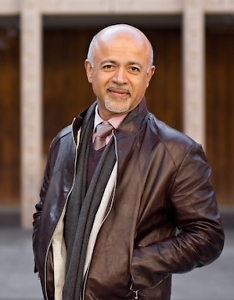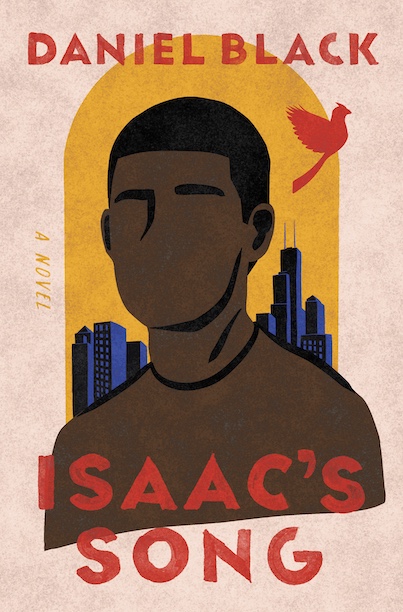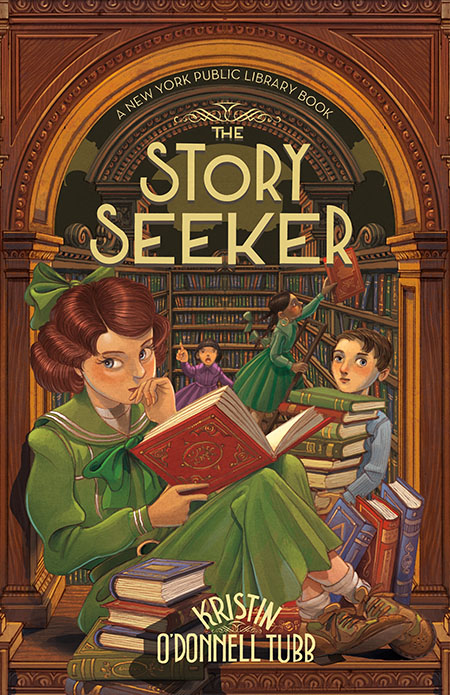Bonds Across Time and Space
Abraham Verghese’s The Covenant of Water braids stories over generations
As with many English idioms, “doubting Thomas” traces its origins to the New Testament: The Gospel of John recounts the Apostle Thomas’ skepticism about the Resurrection until Jesus appears in person, prompting the dubious one to reverse his position. Inspired, Thomas embarked on spreading the Good News abroad. One legend claims he sailed to the Malabar Coast of southern India, seeding a Christian community in present-day Kerala before his eventual martyrdom in Mylapore.
 Nearly two millennia later, the St. Thomas Christians still thrive among the canals and estuaries of tropical Kerala. Abraham Verghese mines that history — and larger debates about faith and science — in his sprawling, textured, leisurely second novel, The Covenant of Water, prismed through native Indians and British expatriates and their descendants, lives braided over generations.
Nearly two millennia later, the St. Thomas Christians still thrive among the canals and estuaries of tropical Kerala. Abraham Verghese mines that history — and larger debates about faith and science — in his sprawling, textured, leisurely second novel, The Covenant of Water, prismed through native Indians and British expatriates and their descendants, lives braided over generations.
The novel opens in 1900, as a 12-year-old girl is formally married off to a 40-year-old widower with a toddler son. (The couple will wait years before consummating their union.) She moves to his prosperous acreage near Parambil, a village that straddles the network of waterways. To her surprise (and ours), the marriage flourishes, a kinship of souls. After a family tragedy — the first of many — Big Ammachi, as she’s known throughout the book, confronts her husband about the mysterious “Condition,” in which members of his extended family drown unexpectedly. He shrugs her off. She thinks of the Condition as a curse, but in fact Verghese has something more complex in mind. (No spoilers.)
Verghese, whose 1994 memoir My Own Country recounted his experience as a physician treating AIDS patients in Johnson City, Tennessee, is that rare novelist unencumbered by the petty cynicisms of our age. An accomplished wordsmith (who even puns on the title of his widely beloved first novel, Cutting for Stone), he conveys ineffable wonder at the tapestry of all life, as in this passage about a stroll along the sea: “The waves celebrate their long voyage with a final splash on the rocks. The moon hangs low like a lantern, illuminating the angular scaffolding of the Chinese fishing nets, more than a dozen of them along the water’s edge. The poles crane out over the water like long-necked shore birds, while the netting billows like the sails of dhows.”
Verghese shifts — makes his rounds, we might say — between characters, locales, and decades, tapping the conventions of historical fiction but keeping his sharp clinician’s eye on his cast of characters. As the new century unfolds, a surgeon, Digby Kilgour, departs Glasgow for training at a clinic in Madras (now Chennai), where he sees firsthand the punishing chains of the caste system and the injustices imposed by British colonialism. Rune, another physician, abruptly changes careers after a road-to-Damascus moment and founds a holistic practice to treat lepers. Big Ammachi raises her two children after her husband’s death with the support of her community, one that transcends caste. Her son, Philopose, opines in print about the political upheavals of World War II, the birth-throes of India, and resentments inherent in religious pluralism.
 The novel’s second half gathers around Philopose’s family. His daughter, Mariamma, spurns faith in order to pursue a career as a neurobiologist — doesn’t the scientific method trump all? But getting at the truth of her own family isn’t as simple as wielding a scalpel, as she discovers when a loved one navigates a health crisis: “There’s nothing emptier than a hospital bed to which a loved one might not return. She’s overcome, slumped on the chair, her face buried in her hands … To Mariamma’s surprise, a nurse comes and sits beside her and prays aloud. Faith at this institution is concrete, not abstract.”
The novel’s second half gathers around Philopose’s family. His daughter, Mariamma, spurns faith in order to pursue a career as a neurobiologist — doesn’t the scientific method trump all? But getting at the truth of her own family isn’t as simple as wielding a scalpel, as she discovers when a loved one navigates a health crisis: “There’s nothing emptier than a hospital bed to which a loved one might not return. She’s overcome, slumped on the chair, her face buried in her hands … To Mariamma’s surprise, a nurse comes and sits beside her and prays aloud. Faith at this institution is concrete, not abstract.”
The Covenant of Water, then, is one of our most sweeping and empathic novels about medicine: Verghese writes with authority and in obsessive detail about the gut-wrenching challenges physicians such as Digby face. There are diagnoses aplenty here. But he eschews the binary of medicine and faith; and in this regard Verghese reminds me of Francis Collins, the former head of the National Institute of Health (NIH) and Human Genome Project (HGP) and a practicing Christian.
Verghese writes at the crossroads of numerous human endeavors. (One narrative thread probes the vital roles art plays in our lives.) While medicine ultimately yields a cause of the Condition, it can’t balm all the sorrows Mariamma’s family have suffered. Like St. Thomas before her, she grasps that what’s seen and heard tells only part of the story. Bonds across time and space redeem us, an epiphany that guides her as she cares for patients: “She washes up, still marveling at the connections in her world, invisible or forgotten, but there are all the same, like a river linking people upstream with those below, whether they know it or not.”

Hamilton Cain is the author of This Boy’s Faith: Notes from a Southern Baptist Upbringing and a frequent reviewer for O, the Oprah Magazine; the Minneapolis Star Tribune; and The Barnes & Noble Review. A native of Chattanooga, he lives in Brooklyn, New York.


